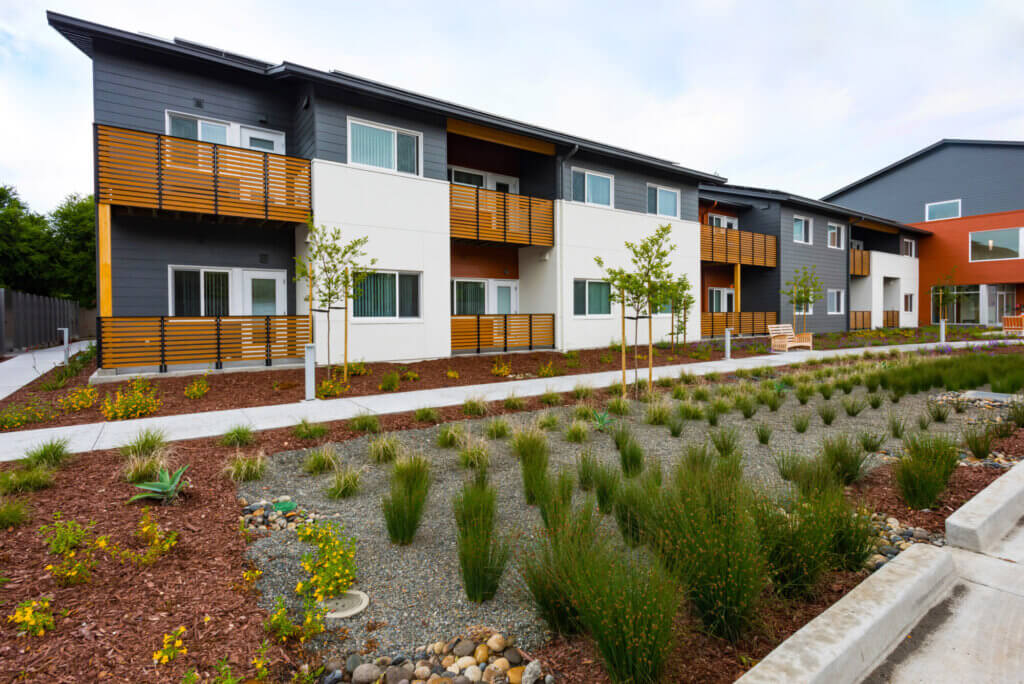Comparing ADU Permitting Time Inside and Outside the Coastal Zone
Published On March 21, 2024
Author: Quinn Underriner
California legislators are looking for a variety of ways to streamline building across California to help the state meet its housing needs. These efforts have caused a renewed interest in how the state approaches housing permitting in the California Coastal Zone. The Coastal Zone, overseen by the California Coastal Commission, stretches the length of California along the shoreline, ranging inland to varying degrees.1 The Coastal Commission has the authority to impose its own land use requirements in the Coastal Zone, which can supersede local zoning.
In this blog, we analyzed whether accessory dwelling units (ADUs) are facing greater administrative permitting hurdles in the Coastal Zone compared with neighboring areas just outside the Coastal Zone boundary. Encouraging ADU development is one strategy to add gentle density to single-family neighborhoods and they have been growing in popularity across the state.2 We used Annual Progress Report data (APR) from the California Department of Housing and Community Development (HCD) to compare the average number of days between when a builder puts in a planning application to build an ADU and and when the builder receives the building permit in three major urban coastal areas: Los Angeles County, Orange County, and San Diego County. We analyzed data for the period from 2018 to 2022. We focused just on whether there was an application to build the parcel, and not the number of ADUs the application cover. We discuss the methodology, as well as the limitations of the APR data and analysis, in more detail below.
In Los Angeles, ADU applications in the Coastal Zone took an average of 260 days to be permitted, compared to 147 days outside the Zone. In Orange County, the gap was wider, with an average of 233 days for ADUs within the Coastal Zone and 101 days outside it. For San Diego, there is no statistically significant difference in the average time from application to permitting in the Coastal Zone versus outside it.
Figure 1: Average Number of Days Between ADU Project Application and Permit Approval by Coastal Zone Designation
Notes: The difference in Los Angeles and Orange Counties is statistically significant at p < 0.01.
This analysis suggests that developing an ADU on land located within the Coastal Zone can take more time than developing an ADU on land located outside of the Coastal Zone, depending on location. Policymakers may be interested in investigating further why ADU permitting is taking longer within the Coastal Zone and take steps to reduce that permitting time in accordance with state law that limits local agency permitting time for ADUs to 60 days.3
Data Limitations and Methodology
To compare ADU entitlement timelines within and outside of coastal zone boundaries, we relied on data submitted to HCD by local jurisdictions in the APR. We extracted data for Los Angeles County, Orange County and San Diego County from HCD’s APR tables A, which contains information on housing development applications, and A2, which contains permitting information, for 2018-2022. We merged these data by APN and then deduplicated entries so that multiple applications on a single parcel were grouped as one. We then geocoded the unique addresses for ADU applications and flagged them as being in or outside the coastal zone boundaries.4
Although these data provide a record of jurisdictional permitting actions, the data include submission errors and missing data. For example, the APR data show approximately 60,000 ADU projects between 2018 and 2022 with valid permit dates. However, we were only able to identify both application and permit dates for 29,000 applications. Applications with usable dates may be different from those without, leading to bias in our timeline estimates.5 As we continue to work with APR data we see the need for HCD to continue to improve data quality in order for researchers to more effectively analyze important housing policy questions.
Endnotes:
- The Coastal Zone ranges from “from several hundred feet in highly urbanized areas up to five miles in certain rural areas” inland from the coast. See: Our Mission. California Coastal Commision. Retrieved from: https://www.coastal.ca.gov/whoweare.html.
- Greenberg, J. et al. (2022). “ADUs for All: Breaking Down Barriers to Racial and Economic Equity in Accessory Dwelling Unit Construction”, Terner Center for Housing Innovation and Center for Community Innovation. Retrieved from: https://ternercenter.berkeley.edu/wp-content/uploads/2022/08/ADU-Equity-August-2022-Final.pdf.
- California Government Code. Planning and Land Use. § 65852.2. See: https://leginfo.legislature.ca.gov/faces/codes_displaySection.xhtml?sectionNum=65852.2&lawCode=GOV.
- See Coastal Zone Boundary [ds990]. Retrieved from: https://map.dfg.ca.gov/metadata/ds0990.html.
- Terner staff also had access to APR data cleaned by HCD staff that they used for their APR dashboard to calculate application and permitting timelines. In a robustness check using this data, we found the same trends and statistical significance reported in this blog, although the overall magnitudes of the average times between application and building permit were moderately lower in each category using HCD’s data.





